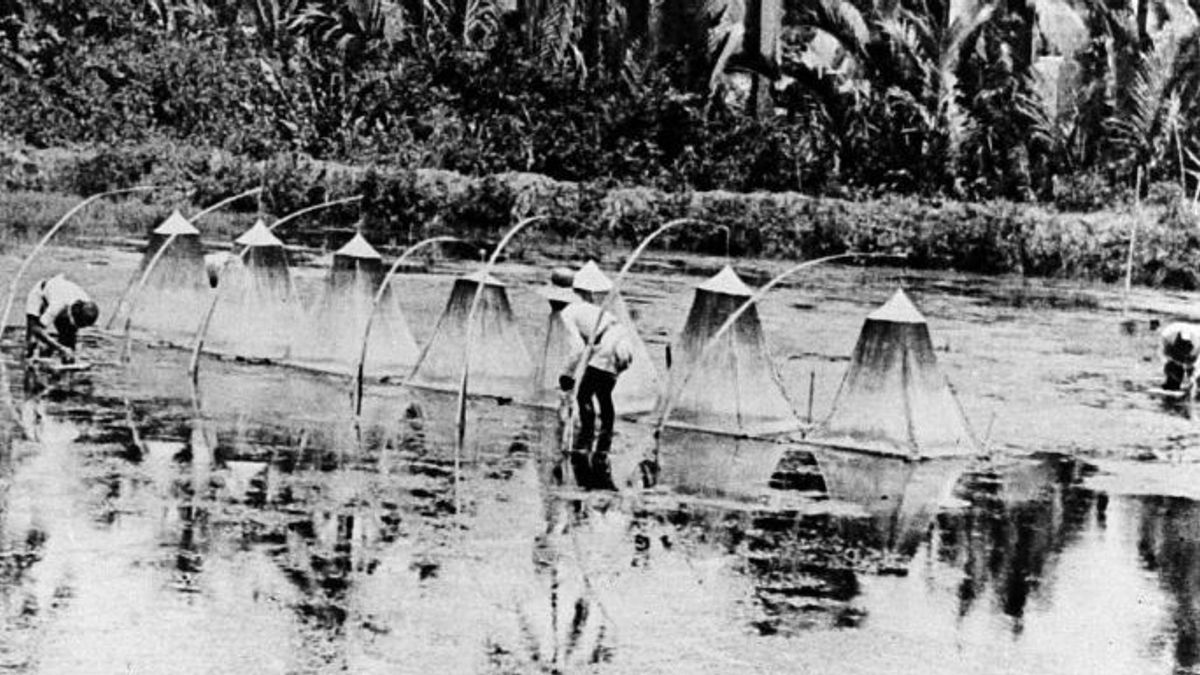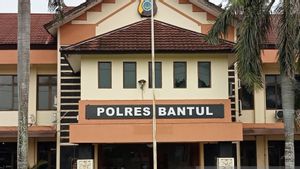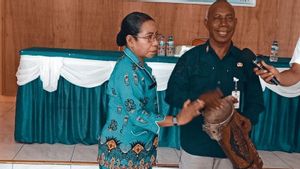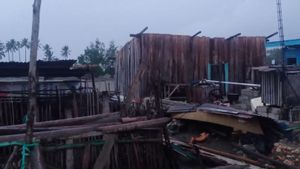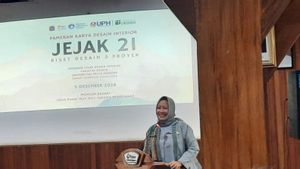JAKARTA - VOC sailor and poet Jan De Marre fell in love with Batavia. In fact, a poem was created when he first set foot in Batavia in the early 18th century.
The Changing Face of Batavia Due to Malaria
O, beautiful Batavia, who has bewitched me.
There the town square with the grand building area reveals your majesty!
How perfect you are!
Your wide canals, with clear water flowing,
There is no city you can match in the Netherlands
Through verses of poetry entitled Batavia, Jan wants to introduce a city called Koningen van het Oosten (Queen of the East) to the world. Unfortunately, this nickname did not last long. The presence of Anopheles Sundaicus - the mosquito that causes malairia - came to change everything.
How could it not be, a century after Jan Pieterszoon Coen built the city of Batavia in 1622, Batavia's condition became increasingly out of control and far from being maintained. Therefore, the catastrophe that comes from mosquito bites, can cause a malaria epidemic that requires many victims.
As stated by the historian JJ Rizal in his writing in Tempo Magazine with the title Mosquitoes and a Collapsing City (2007). Rizal revealed that due to the presence of the Anopheles Sundaicus mosquito, the title of the Queen of the East also changed.
“Batavia is helpless. Patients flooded the hospital that has been in Batavia since 1622. But the deaths continued. The residents call it De Moordkuil hospital or grave hole, because those who come for treatment are not cured, but instead die. This extreme mortality rate made Batavia in the 18th century crowned the most unhealthy city in the world, "wrote Rizal.
As a result, the most victims of the malaria epidemic at that time were none other than Europeans who, in fact, mostly worked as new employees of the VOC. An illustration of this can be obtained from Robert Bwire, author of the book Bugs in Armor: A Tale of Malaria and Soldiering (2000). Robert had written that before 1733, European deaths were recorded at only five to ten percent. However, after 1733, this figure increased to 40 to 50 percent.
“In 1775, the death of a European who had just arrived in Batavia was very worrying. I was so worried that in the two groups that arrived in Batavia, one group consisted of 370 soldiers. Within two years of being in Batavia, 80 percent of them had died from malaria. "
Previously, the record of the dangers of malaria in the city of Batavia had been immortalized by a famous explorer named Captain James Cook, who happened to have landed on Onrust Island, as his ship was damaged.

At that time, Captain Cook and his crew made Batavia their temporary home for two months, while waiting for the ship to be repaired. Luckily, the boat was repaired, but not for the seven crew who died from malaria.
"More Europeans died from the unhealthy air in Batavia than anywhere else in the world ...," wrote Captain Cook in Captain Cook's Journal 1768–1771 (1968).
“News of death became commonplace for them (in Batavia) because it happened so often. They were neither surprised nor affected when they found out that the colleague who met him yesterday had died. When they hear the news that an acquaintance has died, they usually say, 'Yes, he doesn't owe me anything. or I have to collect debts from the heirs. "
Over time, because the victims continued to fall due to malaria, people who were born and raised in Batavia, in fact, often misled the nickname of Batavia, Koningen van het Oosten by changing it to Kerkhoven van het Oosten or Graves in the East.
The cause of malaria is endemic
The Scottish writer, John Crawfurd, through his book Descriptive Dictionary of the Indian Islands and Adjacent Countrie (1856) blamed the earthquakes and volcanic eruptions that made rivers in Batavia, even its embankments filled with mud, were the main reasons mosquitoes reproduced.
That is not the only reason. However, as revealed by various literatures, the causes of malaria were closely related to the greed of VOC employees from 1680 to 1720. Because, on the grounds that they wanted to profit massively through investment in sugarcane plantations, they then liked to open a lot of agricultural land.
Even so, a passionate desire to open land was not accompanied by a desire to care for it. The impact was only felt when there was an economic crisis in Batavia, where sugarcane plantations, which had actually become coffers of income, were simply abandoned.
So, obviously, the accumulation of barren forests, polluted water, and unsustainable cleanliness made Batavia have rotten air and become a mosquito breeding ground. Sadly, many doctors do not really understand the plague they are facing.
"Doctors at that time failed to find the cause. They blame the sea breeze, then the land wind. They import spa water or seltzer from Europe, and don't drink from the dirty river water, and finally they even start to think that the existence of dirty canals itself is not healthy, ”said Bernard HM Vlekke in his book Nusantara (1961).
Susan Abeyasekere confirmed this. In her book, which was banned during the New Order era, Jakarta: A History (1989), Susan had the opinion that the public's ignorance of malaria at that time made the air smell bad as the cause of malaria.
"Most Europeans tend to blame the foul smelling air forcing them to close windows and draw curtains in their stuffy home."
Finally, the people of Batavia could temporarily breathe a sigh of relief when at the end of the 18th century, the Governor General of the Dutch East Indies, Herman Willem Daendels, who ruled from 1808 to 1811, began to move the center of government from Oud Batavia - Old Batavia or the Old Town area - to Nieuw Batavia Weltevreden area, the area around the Banteng Field.
However, this decision had to be paid handsomely by the destruction of Oud Batavia as an intention to break the chain of disease spread. As a result, the old city of Batavia could only be enjoyed through a painting by Johannes Rach (1720 - 1783), a famous painter in Batavia who had captured the atmosphere of Oud Batavia.
The English, Chinese, Japanese, Arabic, and French versions are automatically generated by the AI. So there may still be inaccuracies in translating, please always see Indonesian as our main language. (system supported by DigitalSiber.id)
